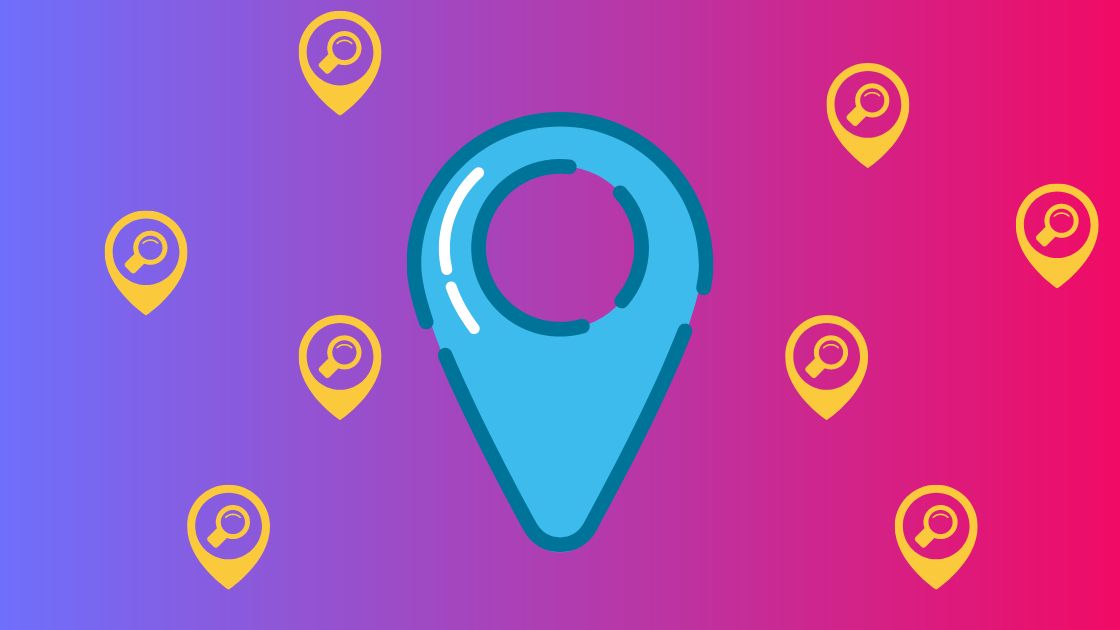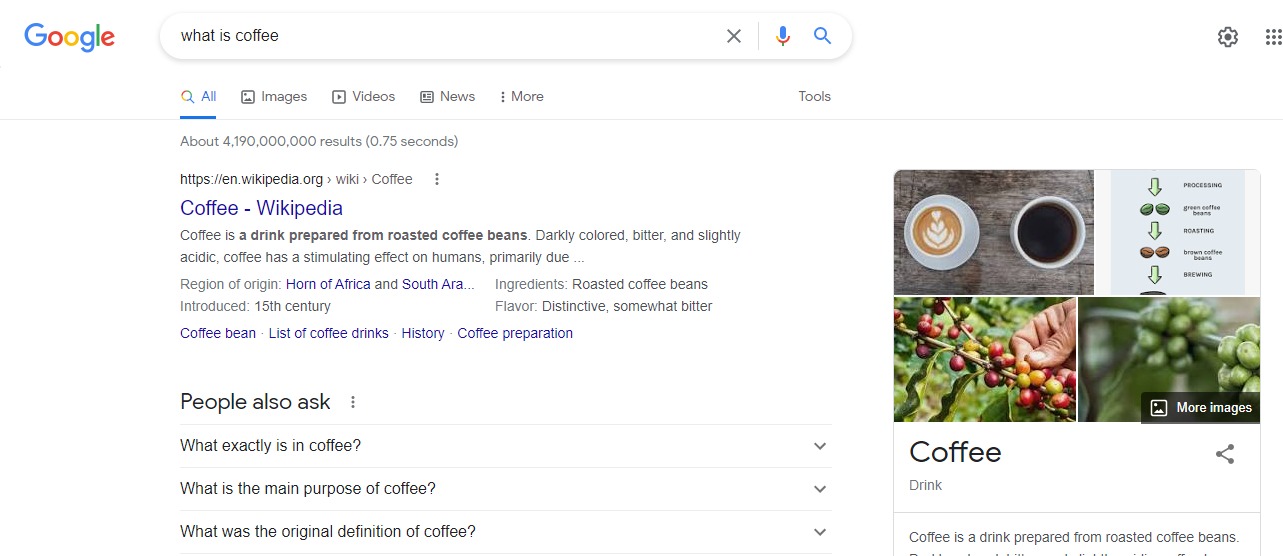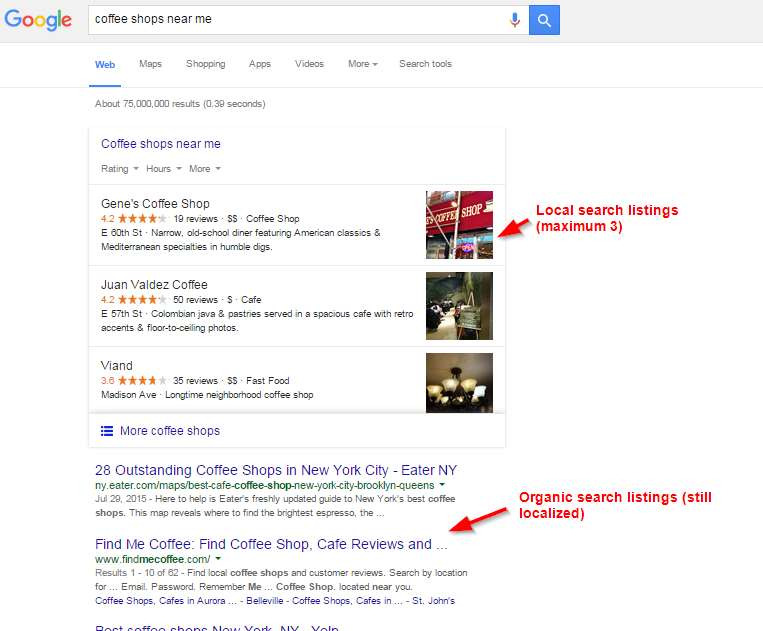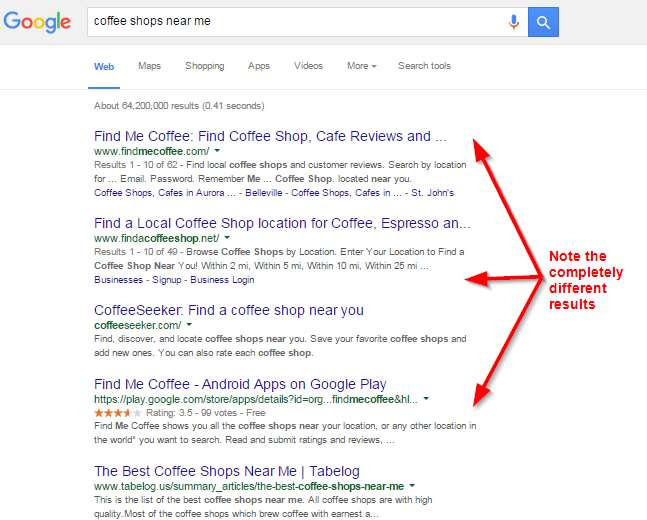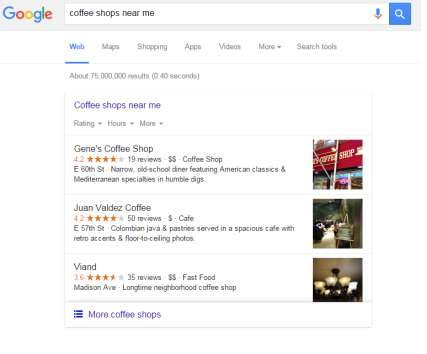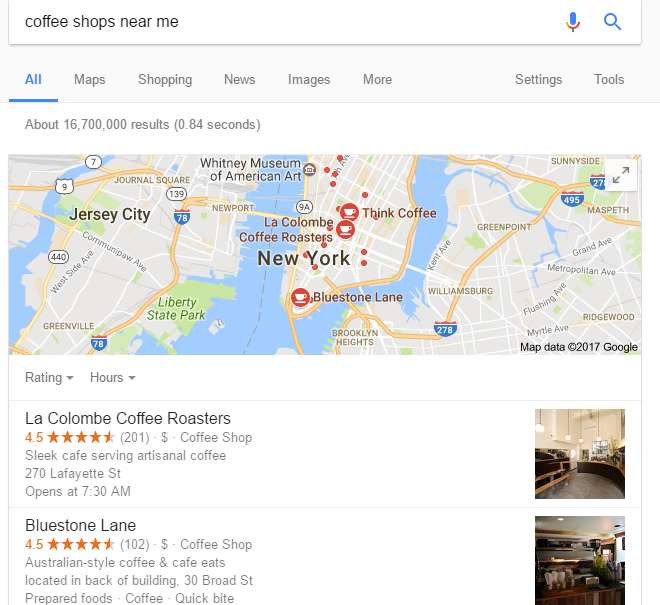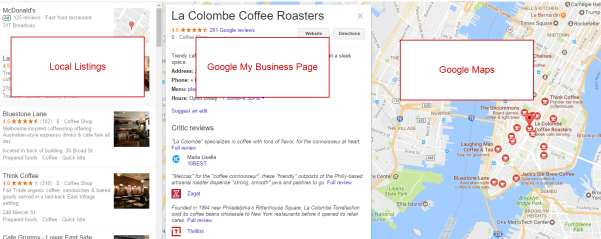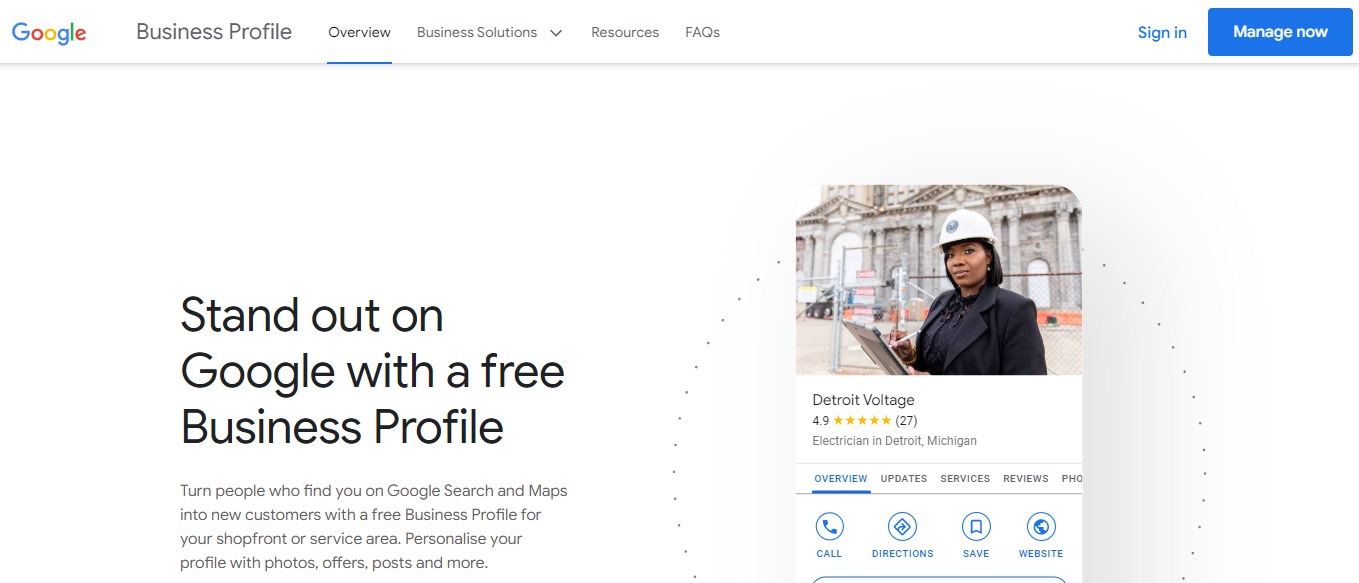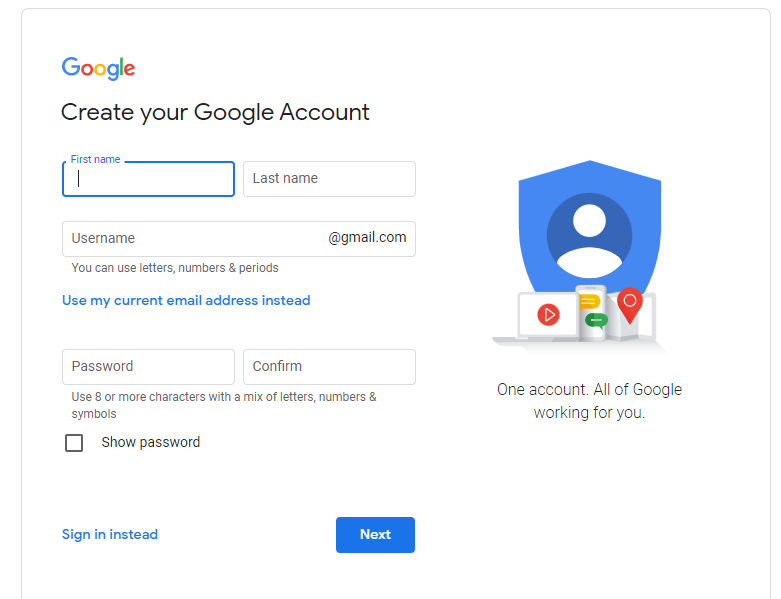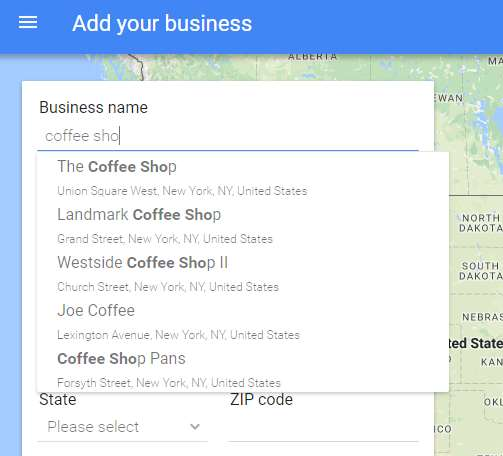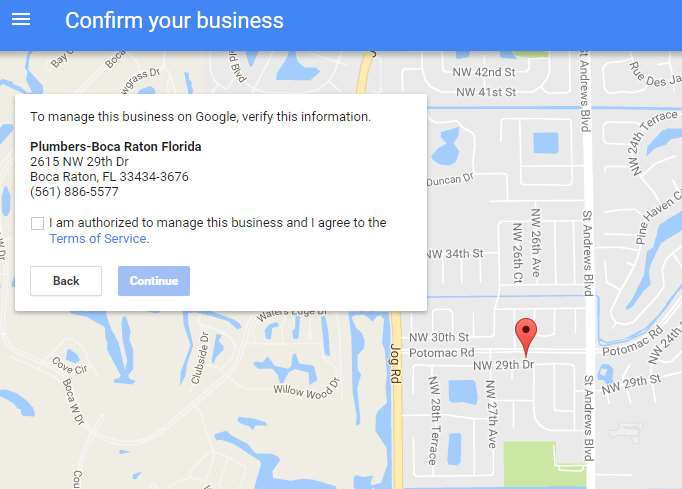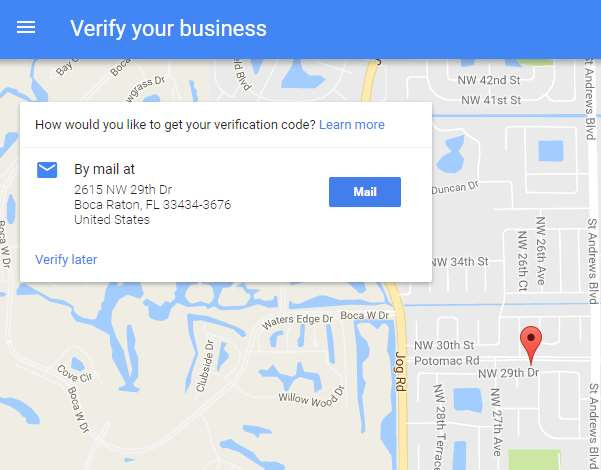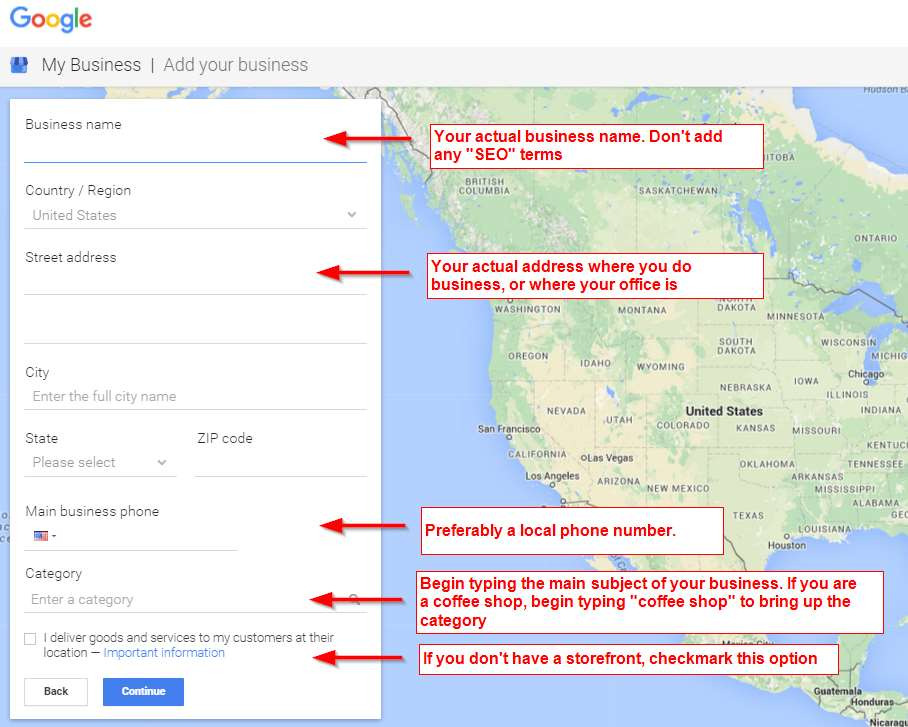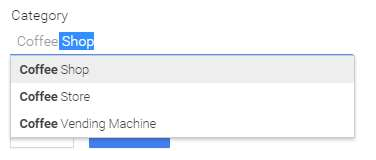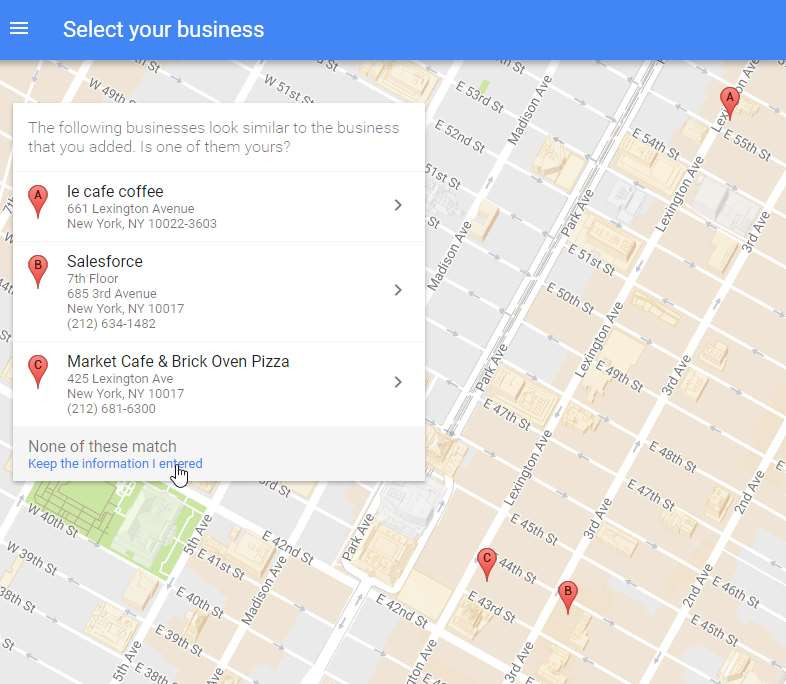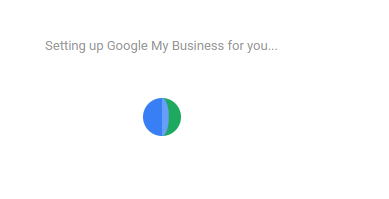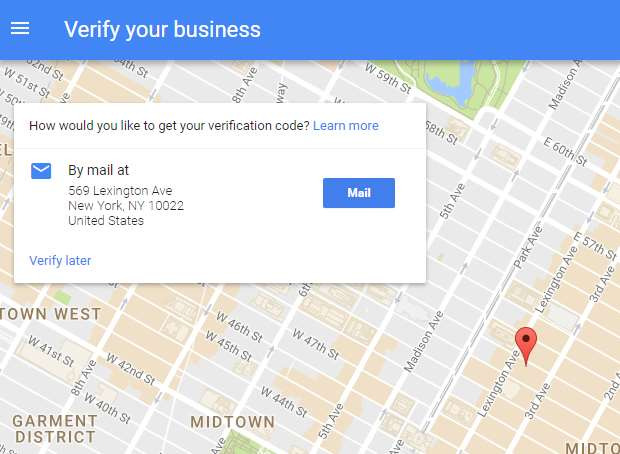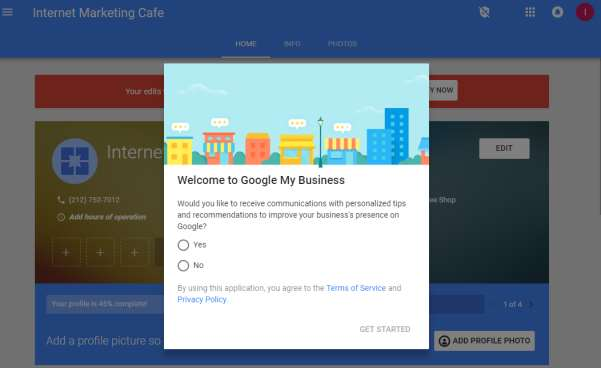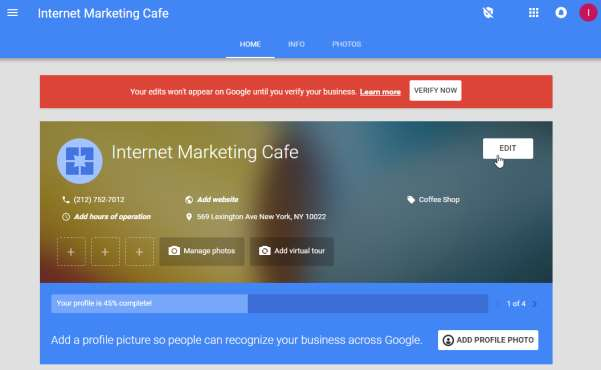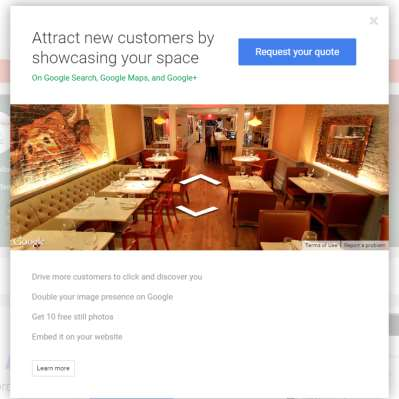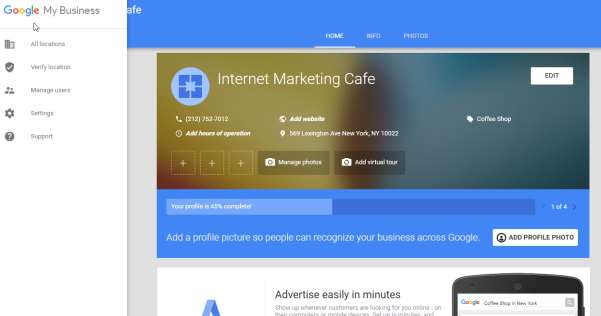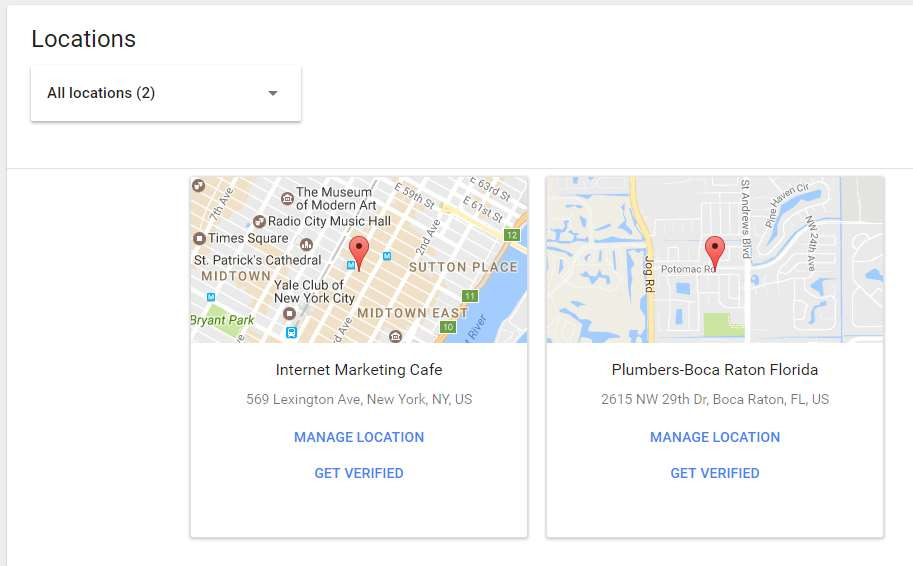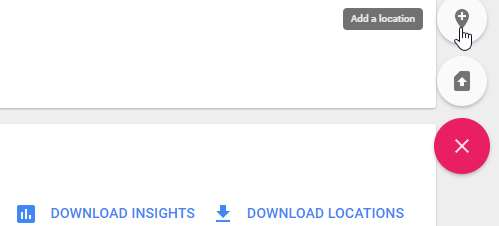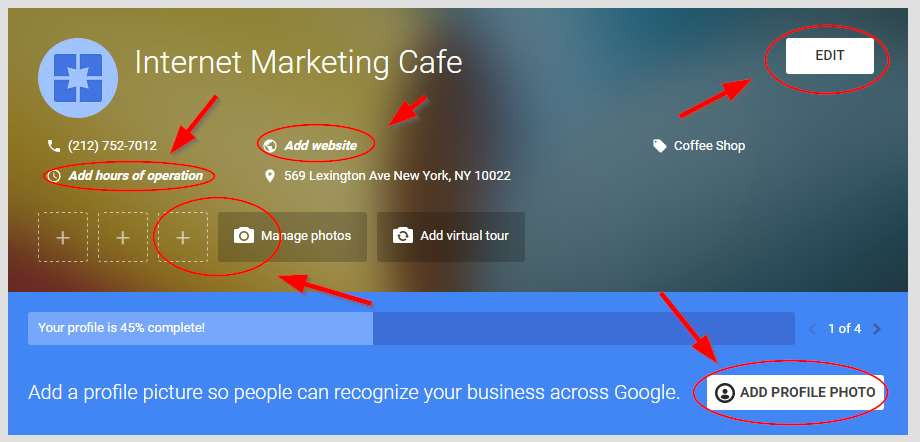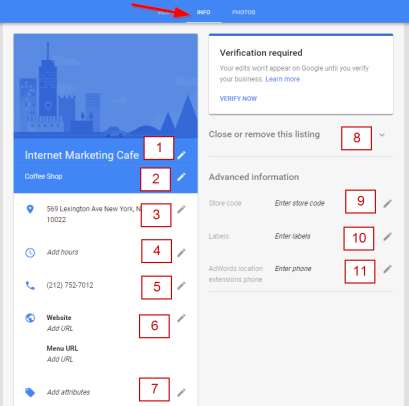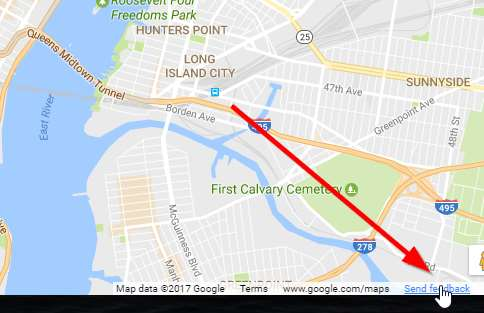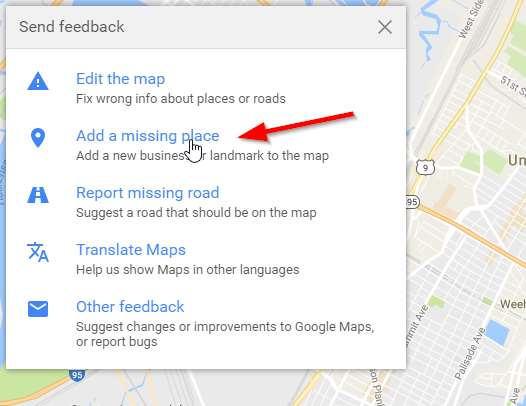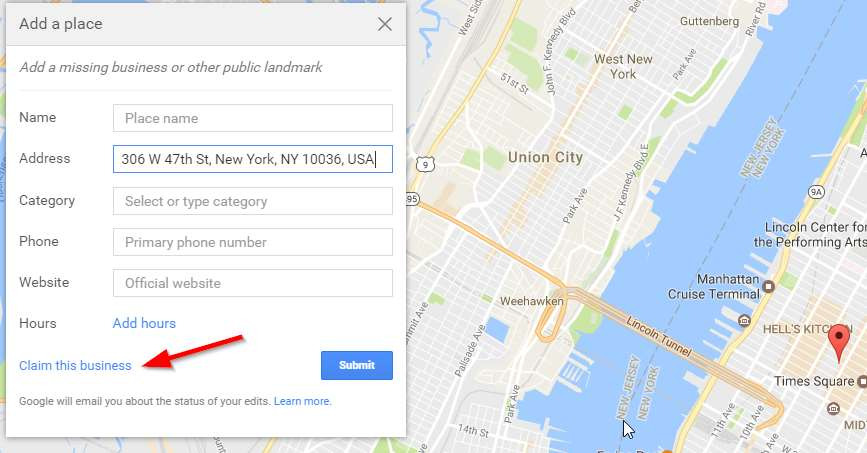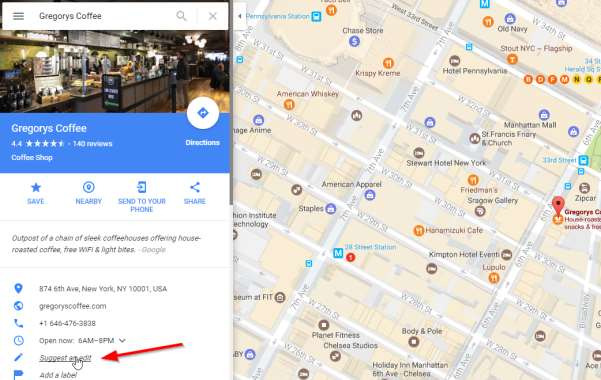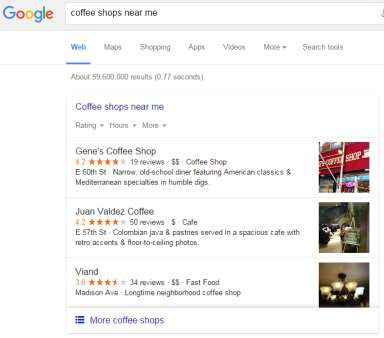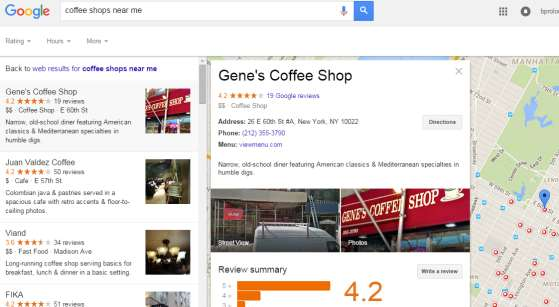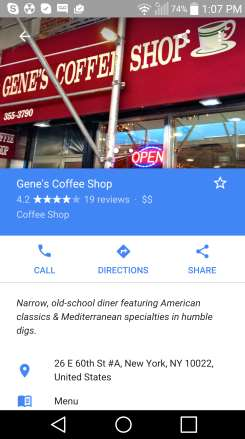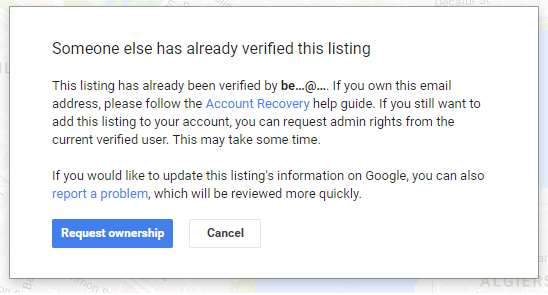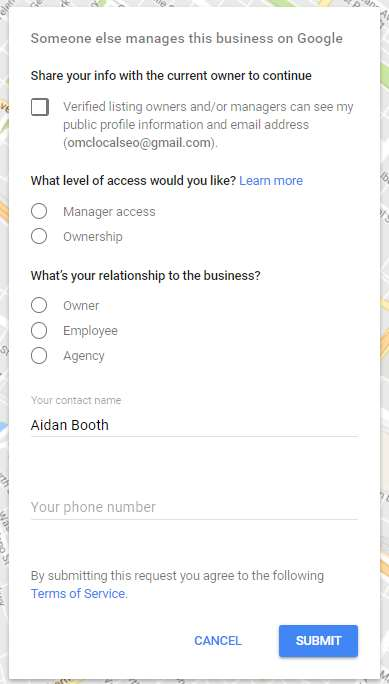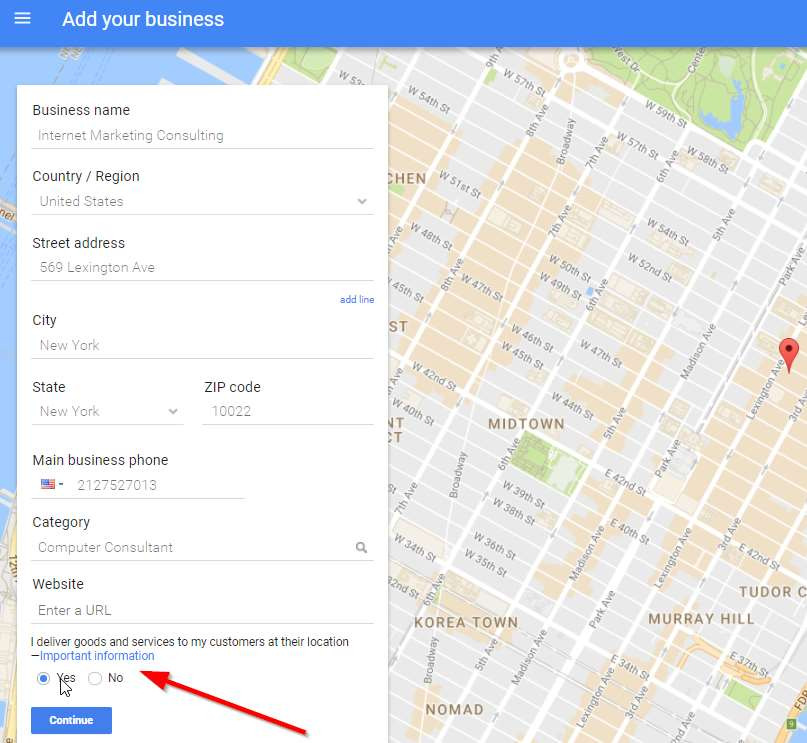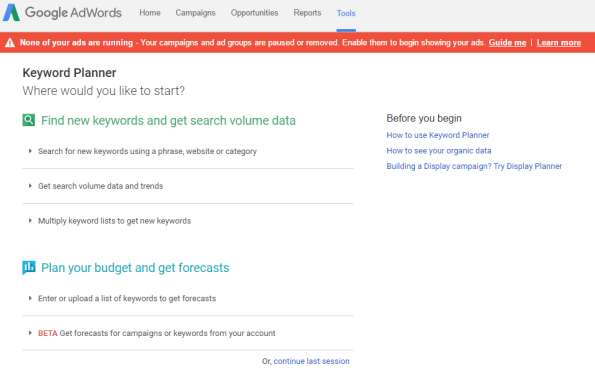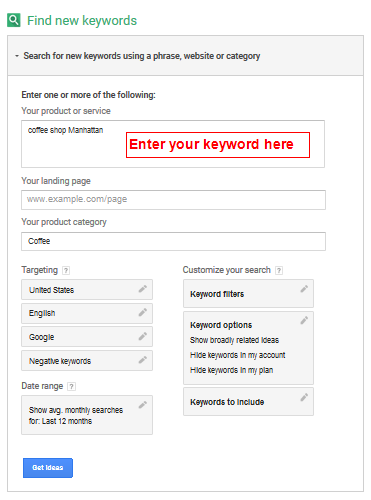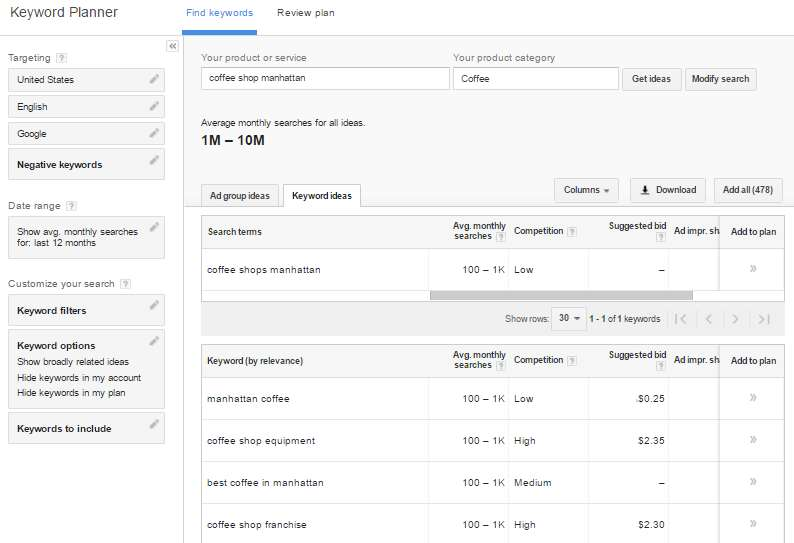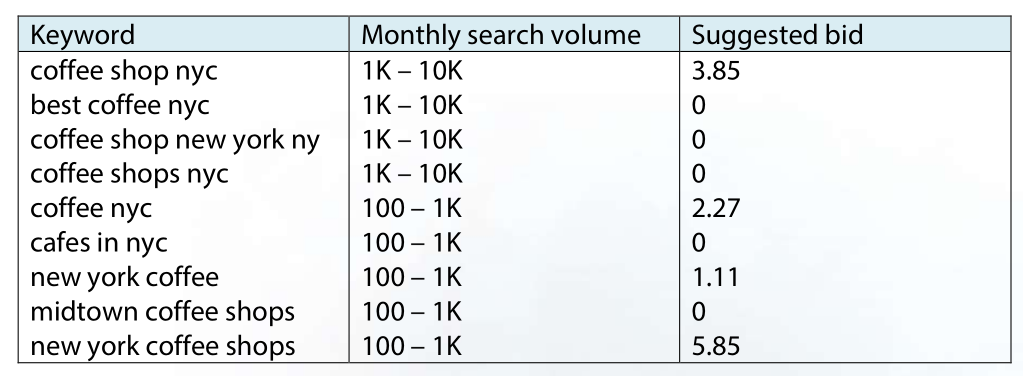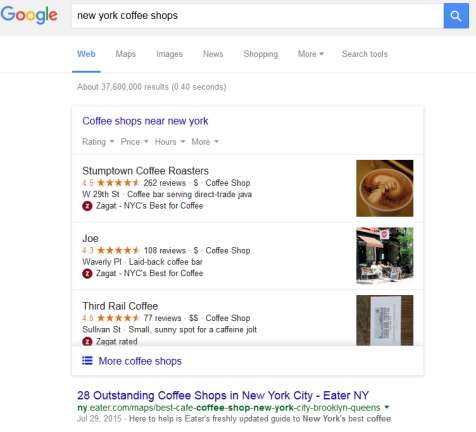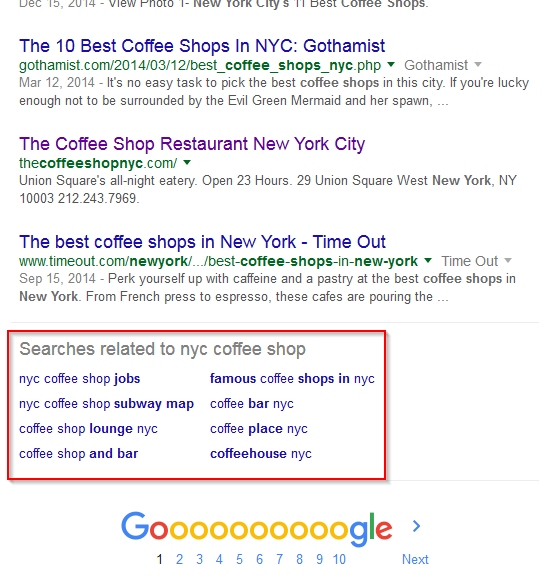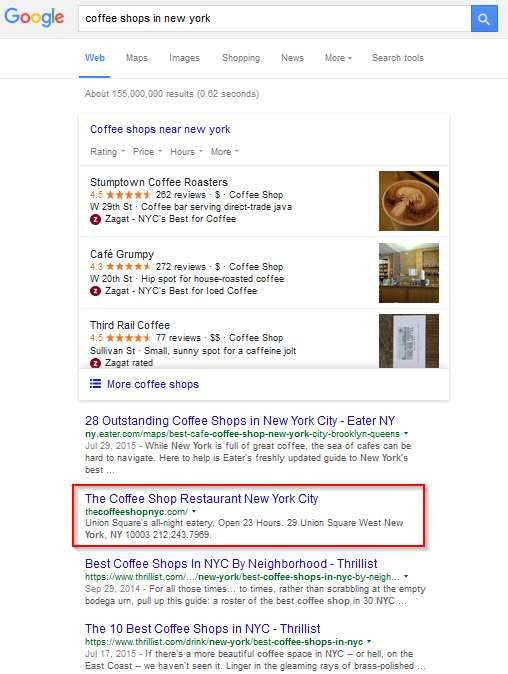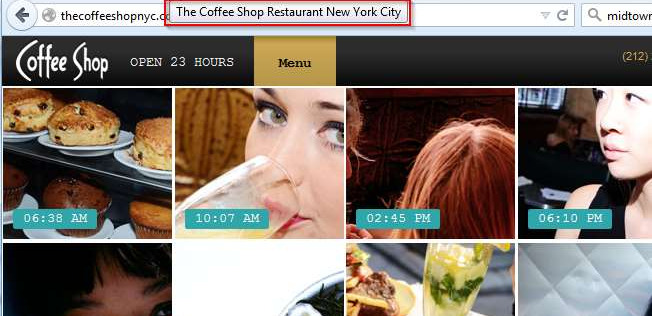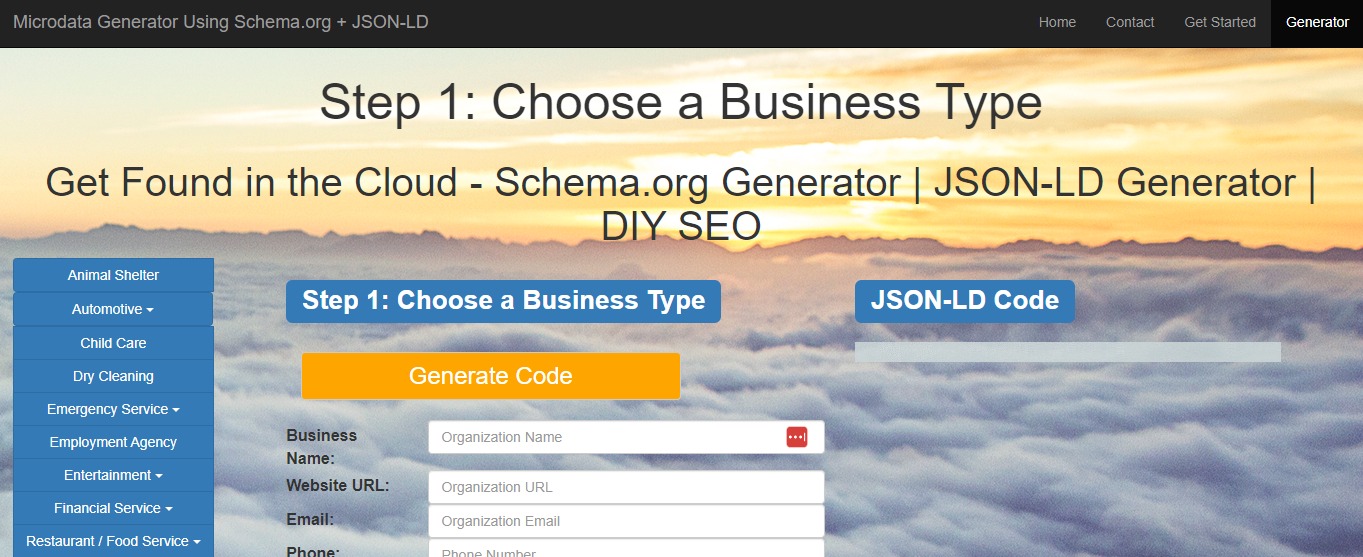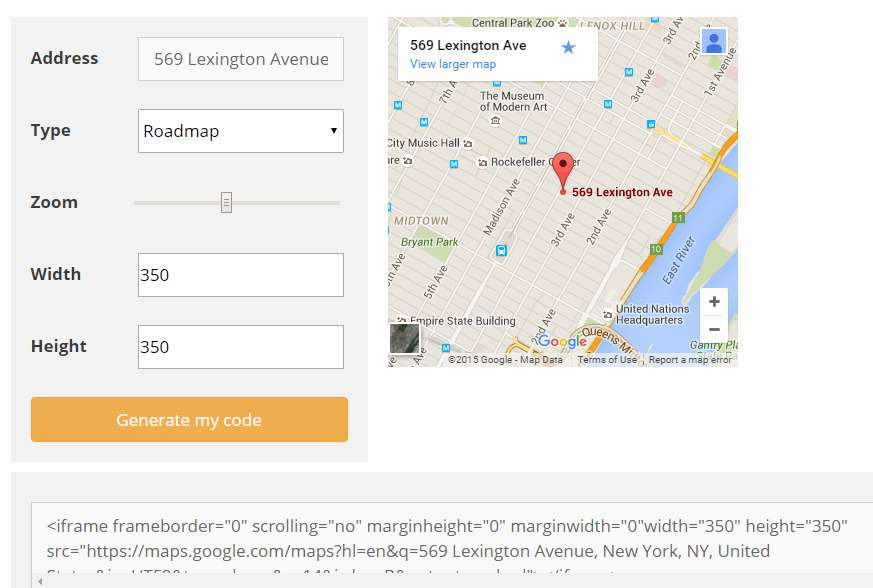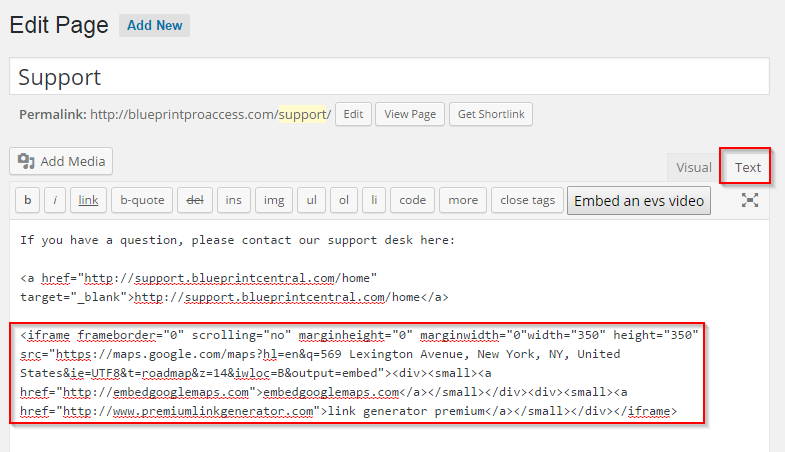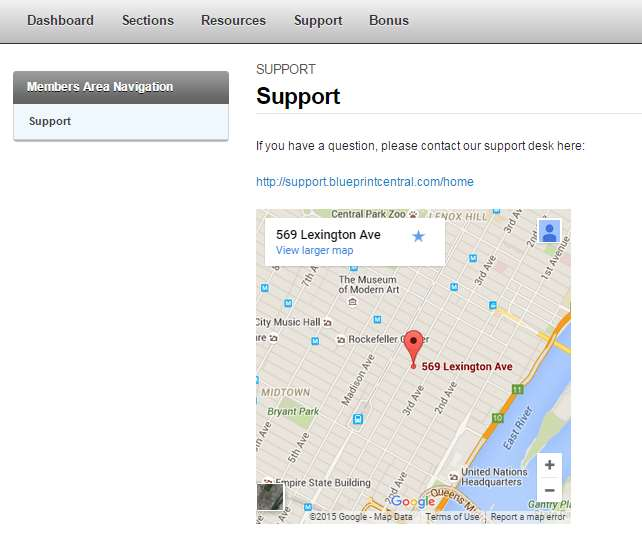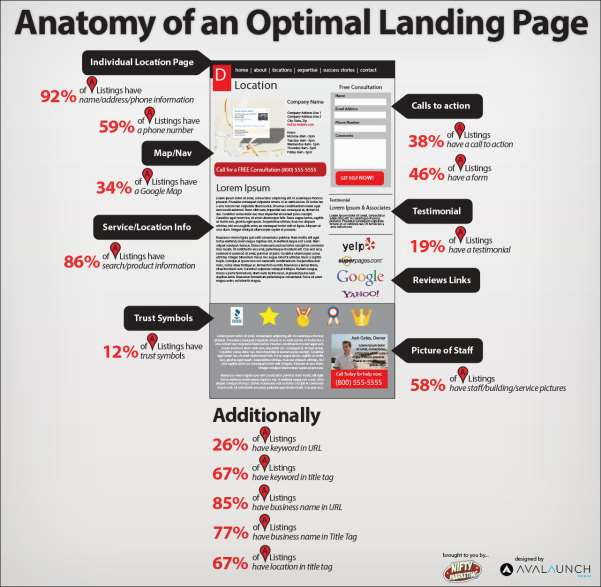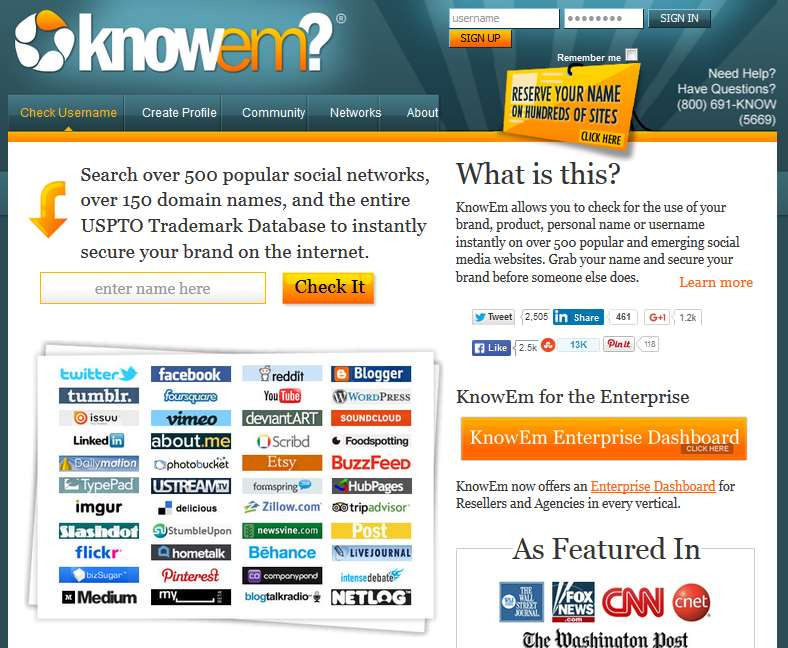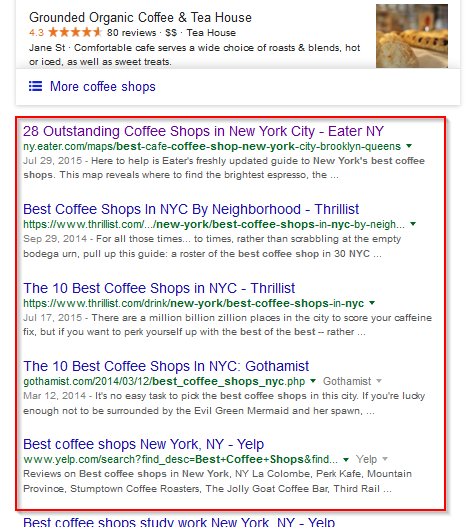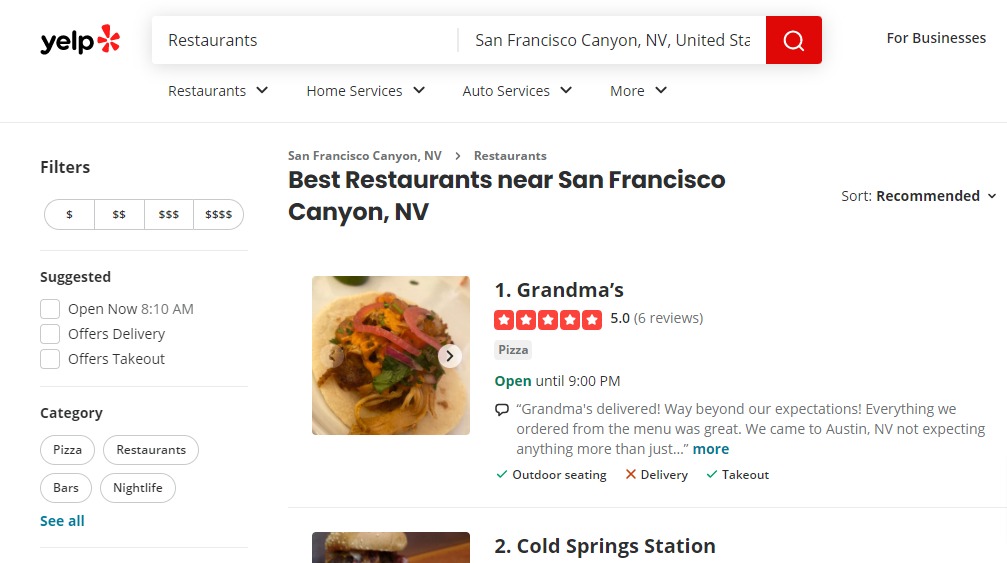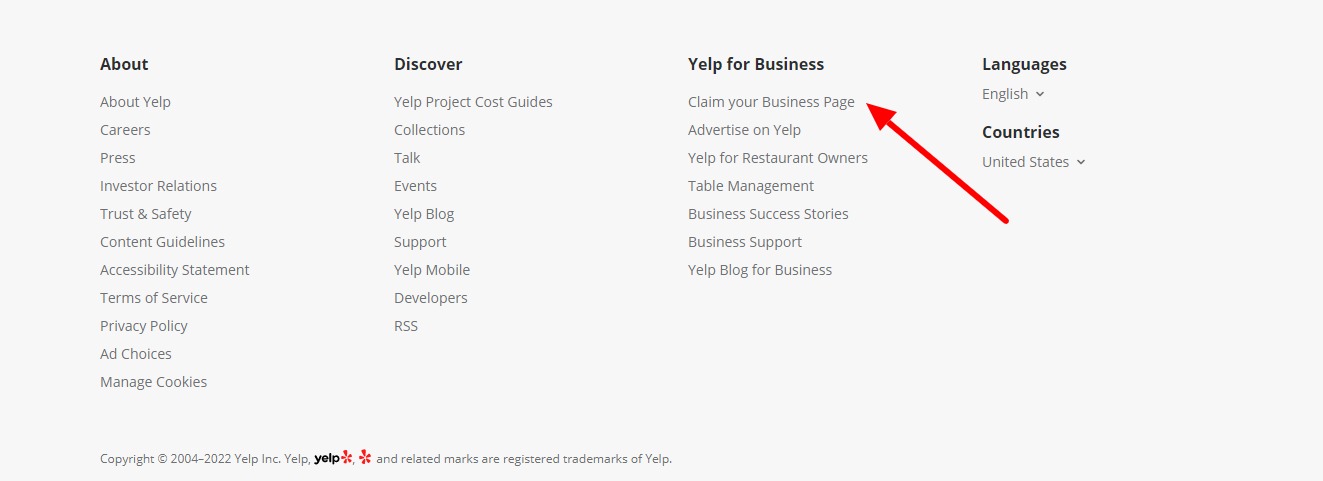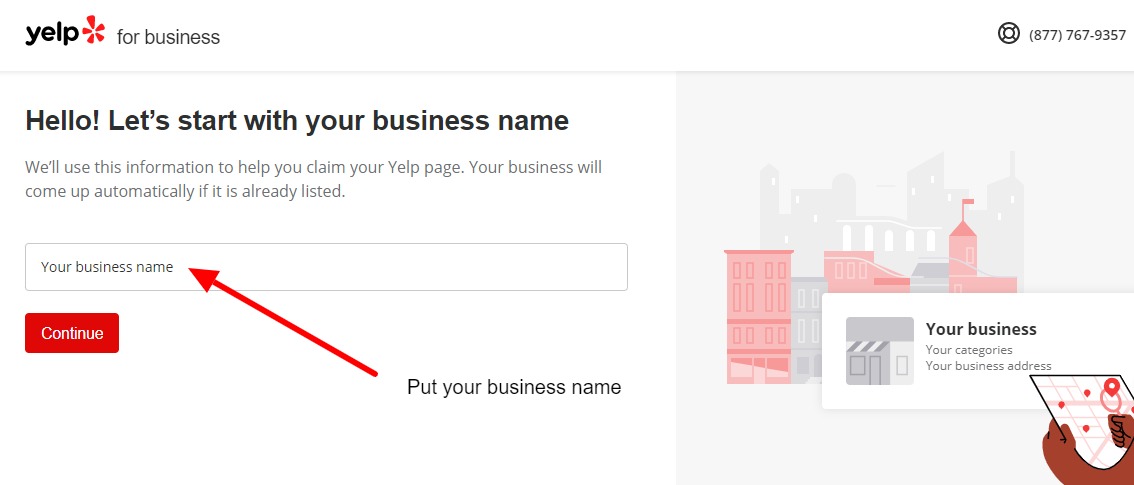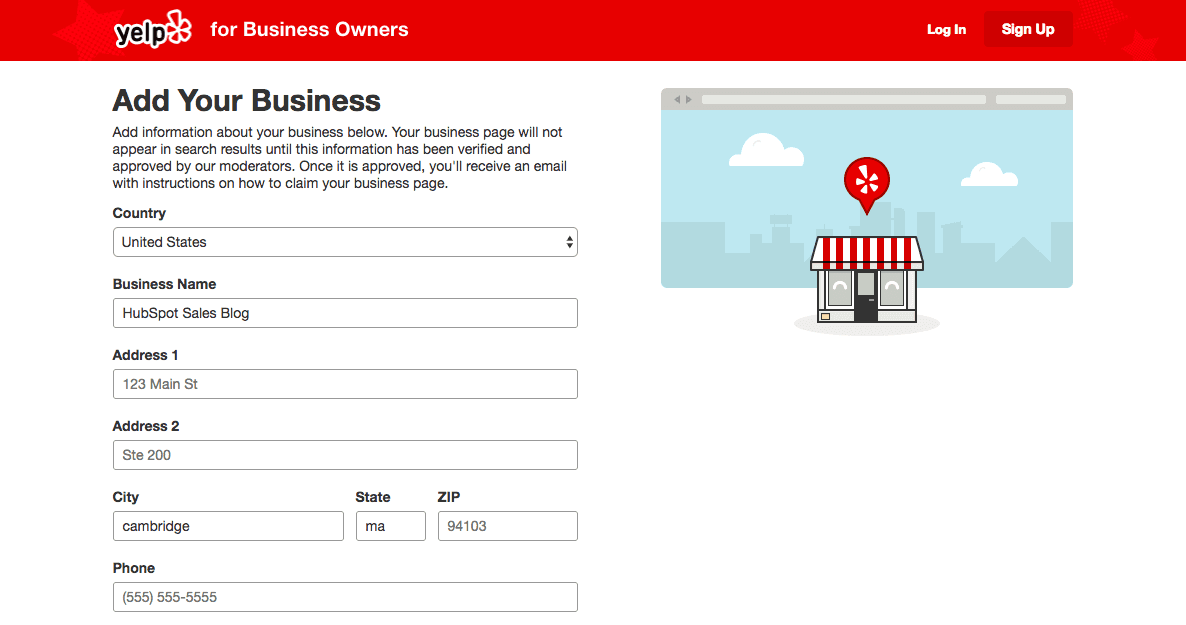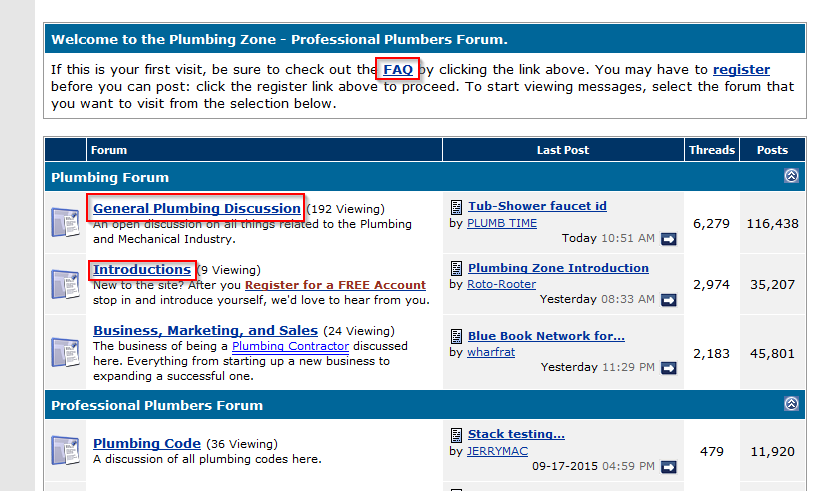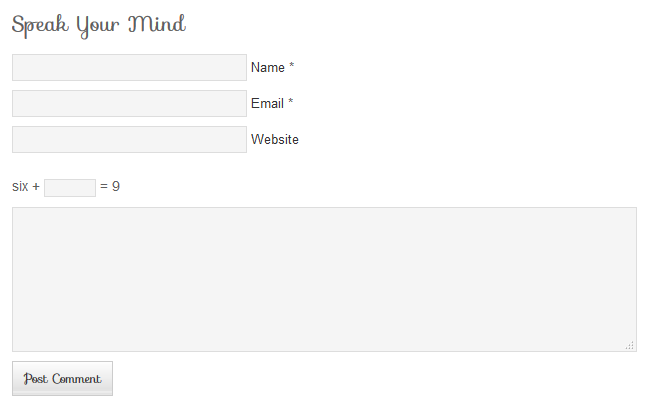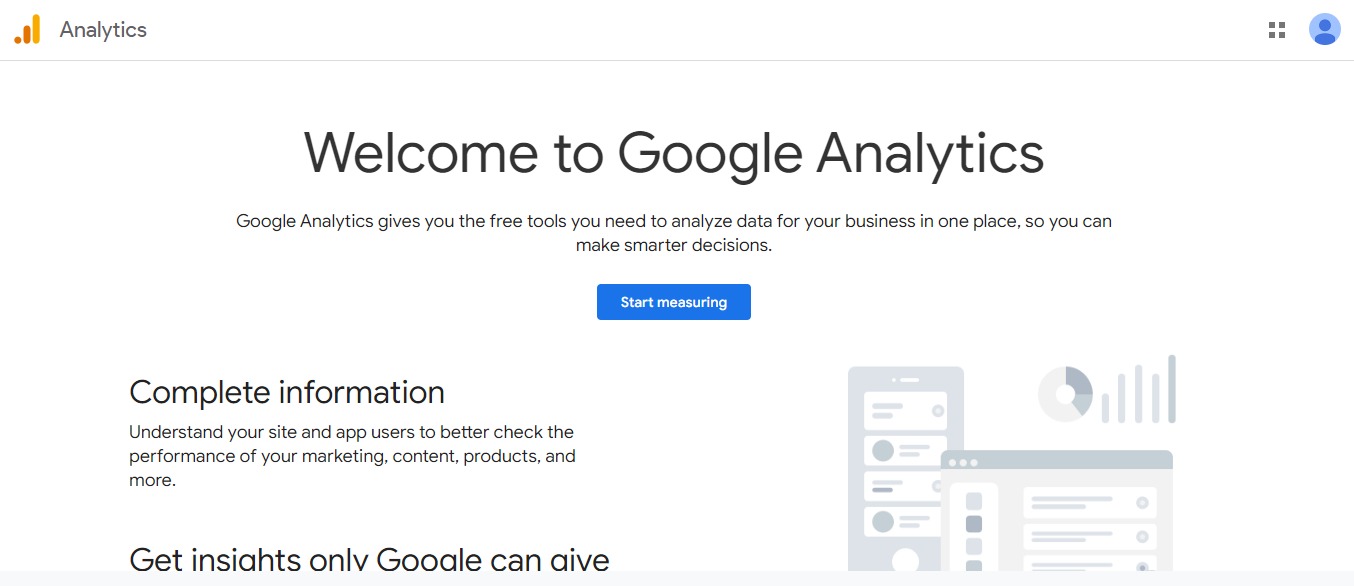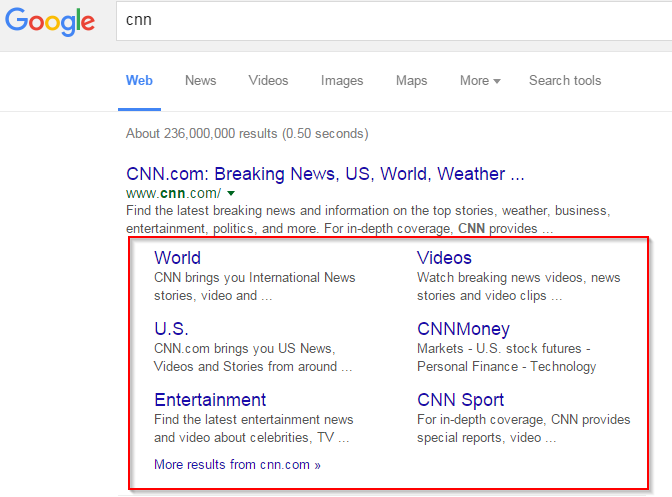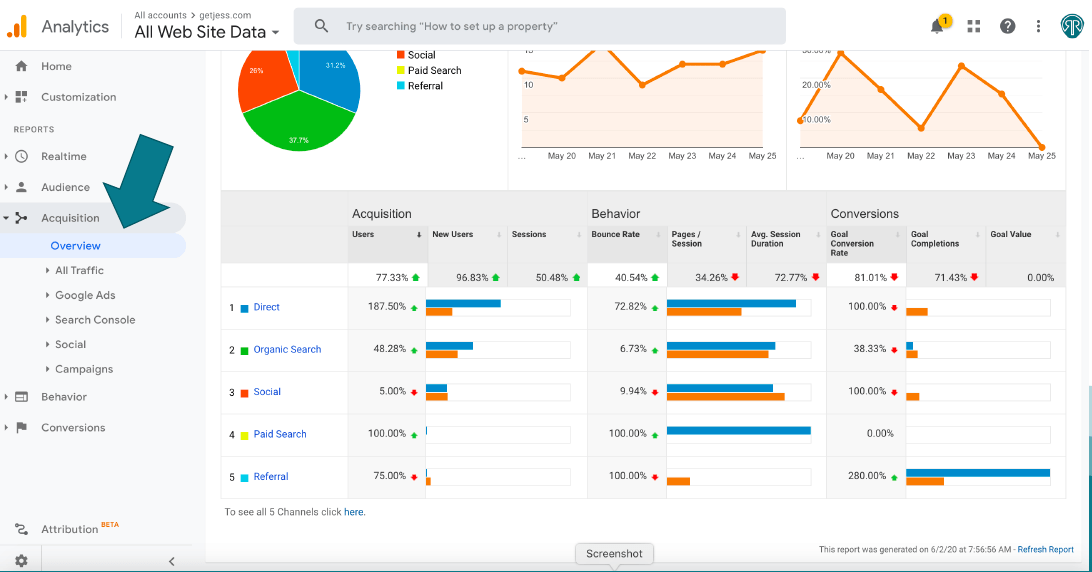All business owners, no matter how big or little, require exposure. If more people knew about your company, you’d have a better chance of making sales. So, the obvious next question is, how can one climb the ranks of Google’s massive results page?
You need to focus on local search engine optimization. There’s a good chance that your company’s local rating will determine whether or not it succeeds.
What is Local SEO?
In a nutshell, it is being visible to potential customers online by ranking for local search terms within Google.
This doesn’t just mean ranking in Google for your customers to find you, but also being visible on Google Maps, local listings within Google search, getting published reviews from review websites and being listed on other properties such as Yelp and Foursquare.
What is the difference between local search and regular organic search listings? There are actually THREE different types of Google listings to be concerned with:
1. Organic listings
2. Local listings
3. Google Maps
1. Organic Listings
Say you live in New York, and you type in what is coffee . Google detects that you are not looking to buy coffee, you simply want to know what it is. So, you will get these organic search results, which tend not to be localized:
2. Local Listings and Local Organic Listings
However, say you type “coffee shop near me” …. Google will know that you are not only looking for coffee shops to get a coffee but also detects where you are searching from based on your search history.
It will return these local results based on where you are located, and the organic search results below will also be localized to your location.
if you are not signed in, or you turned to google personalized feature off, or you are in “stealthy private mode”, or for whatever reason google doesn’t know where are you are . it will return these non-localized, pure organic search results
lets go back to the local results for when you are signed in and have location services turned on.. which nearly everybody has on by default. you will notice the top local result or what is known as the “3 pack” local listening.
If you own a coffee shop in New York, would you want to be listed here? HECK YES
3. Google Maps
The local listings are tied to Google Maps, and in the last few years Maps has become more and more prominent in local search.
This is because Google knows that a majority of local searches are done through a mobile, usually by people on the go and who are trying to locate a nearby service, retail store or restaurant.
Thus, you will likely see Google Maps and the three top coffee shops together.
And when you actually click a business, you will see three screens (on a desktop): The local listings, the Google My Business page summary, and Google Maps:
In this Local SEO article,, we will analyze each step for optimizing your business for Local Traffic.
We are going to assume you are one of two people:
1. Somebody who owns or is part of a web design business wishing to learn about local SEO for clients;
2. Somebody who owns a business and wishes to rank in the local search results.
Therefore, you will both learn how to rank a business on local search and the tools you need as an agency to rank clients in local search.
While Bing and Apple Maps also provide local results, we will be mainly concentrationg on GOOGLE.
Who Can Be Listed in the Local SEO Listings?
Any business with a physical address can be listed on google’s local listing. if your business is purely e-commerce , then you can not apply for a map location ( because you do not have one.. and likely do not cater to local audience anyway )
However, online businesses can apply as a “brand” to be listed on google my Business page. Home-based businesses can also be listed, and have the option of hiding their address if they wish (for instance, if you leave your home to visit clients you can specify a “service area” for your listing )
- Google My Business – The umbrella term for everything having to do with your business on Google. This also includes your administrator dashboard for your local listings (https://www.google.com/business/)
- Google My Business page – The actual listing of your business in Google local search listings.. this will mainly be connected to google maps if you click on it in the search results.
- Google Maps – Where your local and can be found.
Local SEO should be practiced by any business that is providing products and/or service to people in a specific region, city or suburb. it’s great way of driving highly targeted visitors and customers to your website and foot traffic to your physical business
Overview of Local SEO
Local SEO consists of four major components, shown in the diagram below. We will briefly describe each, and go into more detail throughout this guide.
Note that your campaign will take several months. This is a long-term strategy and does take time. If you need customers right away, begin by placing ads the traditional way (signs, newspapers, etc), and online (Google Adwords, Facebook,etc.)
- Google My Business
In order to rank at all in the local search results, you need a Google My Business page. Google My Business connects you directly with customers, whether they’re looking for you in the search results or Google Maps.
This listing allows your business to show up across Google and to give customers the right information about your business.
It also shows starred reviews and user feedback and images on your local listing, an essential indicator of how customers view your business and interact with it.
Most consumers indicate they will often check out online reviews before contacting a business.
- Onsite Optimization
This term us used for everything you can do on your website and webpages to give them the best possible chance of appearing in Google and other search engines.
It includes keyword research, on-page factors, visitor behavior and local business schema markup
- Citation
Citations are like “votes” from other websites. Though there are a lot of other factors involved, citations are part of the ranking signals in Google local search.
Citations include business directory listings, mentions on professional organization websites, and reviews from places like Yelp and Foursquare.
An important thing to keep in mind is to make sure your business information is similar or the same across all citation properties.
- Local Link Building
Much like traditional link building and citations, you will show Google how “popular” you are by other websites mentioning you with a link.
This will include any other website on a local basis. For instance, if a radio station in your area mentions your business, this will count.
This will also count if a blogger in your area reviews your services. However, one thousand websites mention you from unspecified places around right way and the wrong way to do link building.
Local Search Ranking Factors
So, what are the factors that Google uses to rank local results? According to Moz.com, a well-respected search engine agency, these are some of the following:
- Physical address in the city
- Category of business
- Website behavior signals click-through rate, time on your site, etc
- NAP (Name Address Phone) matching your Business Page NAP
- Product/service keyword in business title
- Authority of associated business website
- The proximity of your business address to where the search is taking place
- Personalization of the user searching for a business
- Quantity of structured citations
- Quantity of native Google Maps reviews
- Social signals and engagement (Facebook engagement, etc)
What do all these mean? We will discuss everything on fulfilling these factors, and much more, in this article. You can see the full results here: https://moz.com/local-search-ranking-factors
Let’s begin your local SEO campaign by building the cornerstone of your local listing … the google my business listing.
Your Google My Business Listing
To begin your local SEO campaign, you need to set up a Google My Business account. Before you do that, though, you need to do the following preliminary steps:
1. Website – Technically, you DO NOT need a website to have a local Google listening … you can often rank without having one.
However, you will be missing traffic from natural organic search engine listings without a website. If you do have a website, make sure your actual address and phone number are listed on every page of your website.
Usually, this will be included in the footer of your website. We will refer to your business information as NAP (Name, Address, Phone number) This business information will be used EVERYWHERE, so set the proper format now.
For instance, if you have a suite number, decide whether you will say 11-345 Main St, or 345 Main St, Suite 11 Or, 345 Main Street, Suite 11.
2. Business registration – Make sure your business is registered with the appropriate licenses and organizations (federal, state, local, Chamber of Commerce, Better Business Bureau, etc.) This will help with your citations as well.
3. Business name – Be consistent. Use the same name across every property. If you are known as a don’s flower shop , use that name on everything- your BBB listing, your Google My Business Page listening, your yelp listening … everything.
Do not use don’s flower shop, don’s best flower shop, or Donsflowershop.com on other listings. The key is to be consistent with everything for a strong local listing.
4. Address – Use a real address for your business. if you do not have storefront ,but meet customers in their offices or homes, you will still have to enter your address where you work out of.
This is so google knows the “area” of your service. You can hide your address as an option by starting that you “deliver goods and services to my customer at their location” in local your listing will come up for potential customers that live within the radius of your specified service area, but your address will not be shown.
if you do not have an address at all or serve customers in a specified area, you can create a “brand” page.. these will not show up on Google Maps, and you will not show up in local results.
5. Phone number – Make sure you have a separate, local business phone number for your business that will be answered by yourself or a staff member.
If you have several locations, each listing will have its own local phone number. Ideally, do not use toll-free numbers, unless you are consistent in using it across your website and all listings.
Do not use call tracking numbers (ie Yellow Pages ads) as your phone number either.
Set Up and Overview of Your Google My Business Account
The first step is to sign up and create your Google My Business Page. To do this, go to: https://www.google.com/business/ You will see the following:
If you have a Gmail account, sign in with your account. it doesn’t matter if it’s personal or business, but if you have an account shared with business employees, use that. Otherwise, you can add administrators to your page later.
if you do not have a google account or you wish to create a specially designated account for your business listing, you can create a new one now. click “Get on Google” to begin with
Add your name (it could be your business), password, and other required information. Once complete, you have an account!
Setting Up Your My Google Business Listing
When you first start typing in your business name, Google will automatically check to see if your name exists:
If your business listing DOES appear (mainly because somebody reviewed it, somewhere on the web) you can claim it. we randomly typed “plumber” and clicked a listing.
As you can see below, this business has a local listing, and the owner does not even know it, because the listing has not been claimed:
Can ANYBODY claim a listing? Yes. Fortunately, Google has a verification process in place. I clicked the checkmark and pressed Continue, and Google automatically created a page.
However, it must be verified via a verification code. This will be mailed to you or via a phone call if one is listed
( if you click “mail me my code” this actual business will receive a postcard in the mail at the address listed.)
Backing up a few setups, let’s now set up new Internet Marketing Café listing. Add all your required information.. and answer everything as per google TOS – basically, be accurate and honest about your business. You can read the rules here: https://support.google.com/business/answer/3038177
We are a coffee shop, so we begin typing that in:
Our location will be a quaint setup within the DoubleTree Hilton hotel in New York ☺ once you fill in your info, Google will check to see if your listing already exists.
Click None of these match (unless your business does match), and click the Terms of Service and continue.. google will begin building your business listing:
You will then be asked to verify your listing through mail:
We will verify later (grin), but once you click Mail, you can now set up your business page
Congratulations! You now have a My Google Business Page listing
My Google Business Dashboard
You can now add your logo, interior shots, exterior shots, business hours, and more. Fill everything in as detailed as you can. Different categories will give different information.
For instance, because we are a coffee shop, we can optionally enter menu items
You can also request a Google photographer visit your store to build a virtual tour. Prices start at around $400, and it integrates the interior of your store from the street view portion of Google Maps.
Once you are set up, you can explore the My Google Business dashboard. Click the icon on the top left.
From the left-hand menu, you can manage all your locations, verify your locations,manage users to access your business edits, and settings.
A shortcut to get to your list of pages is: business.google.com
This page will have your account summary, things to do, and your actual business listings when you scroll down. You can also add new listings using the red plus icon on the bottom right
Clicking Manage Location will bring you back to your listing, which you can edit:
Google has made it very easy to update your listing. Simply click any area to add your website, times, images and profile photo.
Clicking Edit sends you to more advanced settings, which is the same page as Info in the top menu:
1. Change your title to the real-world name of your business
2. Your primary category. From here, you can add additional categories that match your business, such as art café is you sell art on the premises.
3. Edit your address
4. Add your hours
5. Edit your local phone number
6. Add your website. You can also add the page of your menu. Because we categorized this listing as a coffee shop, the menu URL was automatically added. Your business listing may show something else.
7. Add attributes to your business, such as what amenities you offer, the type of customer you serve, dining options (ie catering, brunch, etc)
8. Indicate that this business is permanently closed, or completely remove it. If it is closed, you can later mark as open
9. You can add your store code here if you have more than one location. Each location will have its own Google My Business listing
10. Optionally, you can add labels to your listings. This is for your use only. If you
have several locations.
11. The AdWords location extensions phone is an optional field using this, you can indicate different phone numbers in your AdWords ads
Once your business is verified, you will unlock additional features, such as Insights (analytics data) and Reviews, where you can read and respond to customer reviews about your business.
Google Maps
As your Google My Business listing is integrated into Google Maps, it is definitely a good idea to become familiar with what Google Maps is.
As well, you can actually create a Google My Business page from Google Maps. To do so, find your area, and click Send Feedback on the bottom right of the map
From the feedback pop-up, you can add your business here as well:
Then click ” claim my business ” to go to the first screen in adding your business:
As thousands of customers will be using Google Maps to find (and walk to or contact) your business, it is vitally important that your listing be accurate.
If your business already has a listing, and it has incorrect information, you can make changes to correct it. To do so, click your address:
Then suggest an edit: Google will manually review your edits before making any changes. You can perform actions such as editing the address information, moving the location (if your business has relocated), changing the category, or reporting it as incorrect or closed.
Now , you may be asking , “What if my competitor comes here and deletes my listing? Fortunately, everything is moderated, and all these changes must be vetted by a team of respected Google Map experts, who will accept or reject the information. (Too many rejections will ban your account.)
What Your Local Listing Will Accomplish
Once you set up our Google My Business listing and are verified, you will have a chance to be listed in the local search listings.
If we had actually opened up a coffee shop, and set our location to the exact zip code, we could be listed here, after working on the other elements, which we discuss further in this guide:
The 3 results above are known as the “local pack” and show the rating, reviews,category and small description. The description (if there is one) is auto-generated based on user reviews found through the web.
You cannot change it, though you can contact Google if you feel it is incorrect or inaccurate: https://support.google.com/business/contact/business_glance_summary.
Based on what category or business type you are, Google will show different types of information. Clicking an actual coffee shop listing will bring up their business details, reviews from various sources, and where it is on the map
The mobile view (Android) will show this:
Scrolling down will give some images, the map where it is located, and the review summary and reviews, including the ability to quickly leave a review.
Help! My Business Listing Has Already Been Claimed!
If your business HAS been verified (a verification code has been sent and claimed), you will get this message when you try to claim your listing:
If you request ownership, an email will be sent to the owner of the listing, who will be asked to contact you
Of course, there have been cases where somebody has hijacked your listing. If you can check the web, this has happened multiple times, where the former business owner lost the right to use the name but refused to give up the listing (and local search rankings.)
There are other stories where competitors clicked to claim the listing, stole the postcard from their mail, verified the listing and then redirected traffic to their own website.
Whatever the case, click “request ownership” anyway to show that you have attempted to reach the owner. Go through the prompts, answering all questions as best you can.
if you don’t hear back, you will be able to take extra step to gain access to the listening and escalating it through Google.
You can find more information here: https://support.google.com/business/answer/4566671?hl=en
Each dispute resolution is different, but Google support for local business is strong and quite helpful (unlike Google support for organic listings!) You can even receive phone support and have a dedicated Google staff member review your case.
What if I don’t have a physical address , or I visit Clients ?
When creating your Google My Business Page listing, you have an option to “Deliver goods and services to my customers at their location”
For example, our cafe is going to open a web consulting business right next door
Google will then ask you your region, city or postal code, and the radius where you operate your services. If you are willing to travel 30 miles to meet clients, enter that info.
If you do not serve customers at your business address, Google Maps will keep your location hidden.
The service area does not help in your local rankings. All it does is show users your business area on Google Maps. And be careful with this.
Another reason why you do not use a post office box is that the map will calculate your service area from that address.
If you regularly service customers in one area,and your business post office box is in an entirely different area, Google will place your service area in the area of town where your post office box is. that is until they find out you violated their Terms and shut down your listing.
Once you go through all the prompts, and make sure you do not select ” I also server customers at my business address), Google will create your business listing just as it did before, including verifying it via mail.
Note that you will see your address when editing your listing. However, only you will be able to see it.
The only time that Google may show your real address is if you have published it in other directories and citations. They will never show it in local results, but you may still find your address published in the organic search engine listings.
if you really don’t want your address shown , make sure it is not on your website or business directories.
Once you are set up in Google My Business, the real work begins ranking your listing on Google local search.
Optimizing Your Website
While you are awaiting verification for your Google My Business Page to go live, you can spend the time making sure your business website is optimized both for the search engines and for your customers.
While it is true that you don’t need a website to rank your local listing , having one shows your professionalism as a business and gives you another point of entry for customers . it is also the only online presence that you actually “own”
you don’t need a super-fancy expensive website, but you need to make sure it has the following points.
- Optimize your website for visitors, not search engines (the two are increasingly becoming one and the same)
- Make sure your NAP (Name, Address, Phone Number) is on every page
- Have useful content and information
- Make sure your website is mobile-friendly
we will talk about each one, but first we’ll discuss the most important aspect of ranking your website in the organic search results keyword research.
Keyword Research
Keyword Research is not only important for a local and organic SEO campaign, but helps you focus on what your business is about and how your customers search for you.
Do a majority of your potential customers type in “cafe” or “coffee shop” If you aew a florist in Washington dc , do they type in “florist” or “flower shop?”
Knowing this information will help you target certain search terms to rank for as well as what words to include in your content and titles (without being spammy.)
Here are step-by-step instructions for researching keywords for your business website. Head over to the Google Keyword Planner at this link : https://adwords.google.com/KeywordPlanner
once you’re logged into the google keyword planner , you’ll see the following screen:
Click the “search for new keywords using a phrase, website or category” option.
You’ll then be asked to enter some information. the more information you add , the more targeted the results will be. As a general rule, the most important field is the one titled ” your product or service” . This is where you add in keywords that you will like to rank in Google for.
For example:
- A hair salon in chapel hill might put ” hair salon chapel hill”
- A certain café on Lexington Avenue in new york city might put “manhattan coffee shop”
- A Ford car dealer in London might put ” Ford dealer clapham” or “Ford dealer South London”
You can get as specific as you like here. For big cities you may want to use specific suburbs, while for small villages you may want to use wider regions in your keyword.
Add a few keywords to the form as shown in the example image below, then click the “get idea” button
You can add more than one phrase (ie coffee shop Manhattan, café Mahattan, coffee shop New York, etc).
You’ll then be shown a chart that shows a range of different keywords as well as monthly search volume (which is GREAT for identifying seasonal trends!) it will look something like this.
Below the graph you’ll see the there two tabs.one is titled “ad group idea” the other is “keyword ideas”
Click on the “keyword ideas” tab and you will be shown the list of keywords you originally entered, and a large list of keywords which may be relevant to your business.
What you now need to do is identify 2-5 keywords which you think are most likely to bring targeted traffic to your website.
You will see that each keyword has data for the “average monthly searches” this is estimated amount of people searching for that specific keyword to “encourage” you spending money on AdWords campaigns, Google no longer shows the average keyword searches, but a range. (If you create an actual advertising campaign, you will be able to see more accurate numbers.)
You can also download all your keywords as a spreadsheet. From there, you can easily filter results , look for keywords that “fit” the audience you are looking for and view the suggested bids to see what keywords are being bid on.
We have 445 keywords, and from these we found the following which would work
The final piece of research is to do searches on these keywords and make a note of which businesses have a strong local presence
There are some keywords that are missing… for instance, “where is a good coffee shop ?” “find coffee shop” and other mobile search terms.
because they ar specific to where a customer is located, you can’t optimiza for these terms.
You will, however, work on your listing to show up in one of the three results in local search when people ask for queries such as those.
Related Searches
You may have noticed that when you do searched on google , you will see ” related searches” at the bottom of the search result , such as this
Whenever somebody types a query into Google, that search phrase is saved and compared to similar phrases searched by others. All these millions of searches are categorized and similarities are noted.
When you do a search, any “relegated searches” are the most popular pharses similar to what you typed in. This data is gold, because it gives you extra depth to what your customer are searching for.
So , we have “lounge” “and” ” place” and “coffeehouse” as well.. all keywords you can use in your website content ( and maybe even Google My Business Page category.)
so do you have to manually type several google searches to find these “related” searches? well there are many SEO tools available ex: moz , semrush , ubersuggest , ahref .
Your Webpage Title
Now that you have identified the keywords , you want to rank for, thenext thing to do is to make sure your website is set up in the right way to leverage these keywords.
When google is deciding how you’ll rank your website for each keyword , it tried to work out how relevant your website is. One of the ways it does this is by looking at your title, description and ALSO your on- oage content.
we will now take a closer look at each of theses , as well as your ” schema” and how it can boost your exposure.
Whatever you set as your webpage Title is what Google will normally show as the title of your listing in their search results pages. If you are using a WordPress website, the title of your webpage is usually the “title” of your post or page.
However, if you use a special SEO plugin, you can specify the title there as well
We first see the 3 local results, and the first organic result for an actual coffee shop business website is The Coffee Shop Restaurant New York City.
Note their website title when I hover over it in the tab. it is the same as the title in the Google organic search results.
Your title needs to capture the searchers attention and be targeted to what you are trying to rank for.
For example, due to our keyword research, we now know to add the work “NYC” in our title, since we found that this is a majority of the top search terms. So, if you are a coffee shop in New York City, then your webpage title might be NYC Coffee Shop Blueprint Pro Café, Lexington Ave, New York
Google limits you to approximately 60 characters (it varies) for your title. The above title is 68 characters, so ” NEW YORK (and website visitors) will associate NYC with New York.
Your Webpage Description
The next thing is your description.
Just like your title, the description is vitally important to your website, as it’s one of the things that’ll determine if searchers choose your website, or one of your competitors (when searching in Google).
While Google (and most other search engines) do not factor your description into how they rank your website, they will likely use it as a summary of your page in their listings.
You’ve got 160 characters available for your description, and you need to try to use them strategically.
Try to include your target keywords in your description and other words that are likely to appeal to your target audience and get them to visit your website.
Once you’re written your description, add it into your webpage! In WordPress, it is best to have an SEO plugin help you with this (All in One SEO, Yoast, etc.
Your “NAP” ( Name, Address, Phone )
A large factor in ranking on local search is clarity about your business address. On each page, make sure you list your business name, your address and your phone number. A great location for this is either in your header or your footer.
When considering your business for ranking in local search, Google will find matching instances of your name, address and phone number, and add that to their vast database.
They will then make connections between your local listing, your website, citations (which we will get into), backlinks, media mentions and reviews. The more quality connections and references to your business , The stronger both your local ranking and your website’s organic ranking will be.
When planning your local SEO campaign, make sure you have a standard format for your business name, your address and your phone number.
While Google will understand different formats of your address, a good rule of thumb is to have it match across all the different connections on the Internet. Come up with a standard format, and use that on all communication, networking and link building.
Local Business Schema
To help with your NAP, there is even a special mark-up code called “local schema” , also known as “microdate”. These are special tags, inserted into the html of your website code, that helps Google, search engines, citation sources and social media sites help and categorize your business.
You can generate local schema in here
You will get something look a like this:
<div itemscope itemtype=”http://schema.org/LocalBusiness”>
<span itemprop=”name”>Example Business</span>
<div itemprop=”address” itemscope itemtype=”http://schema.org/PostalAddress”>
<span itemprop=”streetAddress”>38 Amazon Way</span>
<span itemprop=”addressLocality”>Chicago</span>,
<span itemprop=”addressRegion”>Illinois</span>
<span itemprop=”postalCode”>12783</span>
</div>
Phone: <span itemprop=”telephone”>2651878278</span>
</div>
When we’ve been talking about NAP, this will be actual name,address and phone number code you can place on your website within the html code.. either in the footer, or in the header. It will go on every page of your website.
You can add CSS styling or html around the schema tags to format your address better for public viewing on your website.While having local schema markup is not necessary, you are looking for every edge to get your website and local listing ranked.
Embedding Google Maps
Many websites also actually embed Google Map code into their website, usually on the Contact Us or About Us page. Embedding the code is easy.
If you have an HTML editor, you can copy and paste into your website. If you are using WordPress, click the “TEXT” editor portion of your page editor , then copy and paste the code.
Do generate the code, go to this website.
First, enter your address on one line (no zip code required, just the street and city). Select the type of map the regular roadmap, the satellite view or a hybrid, the amount of zoom you want, and the width and height. Everything automatically changes as you input your info.
Click “generate my code” and the code will appear below. click the “copy to clipboard” and paste into your page. Done.
In WordPress, make sure you have selected the Text tab on your editor:
The live view:
Having Useful Content and Information
Now that you have a title, description, NAP information (either formatted in local schema code or not ) , it is time to add content to your website!
What type of information should you add? The simple answer is anything and everything to promote your business! Information should include:
- Your NAP (of course)
- Your hours of operation
- Your service and location info, such as what you do, what services you offer, a description of your business, your history, etc
- Testimonials
- Images and short bios of your friendly staff
- Trust symbols, such as BBB, Verisign, any local verifications to show you are a real business with a quality rating
- Media mentions / press page
- A contact form or online quote (Call to action)
- Links to reviews (Yelp, Yahoo, Foursquare, Superpages.com )
Below is a great graphic that illustrates the anatomy of an optimal landing page on a business website:
Note some of elements that can be included in a page
- Google Maps
- Location and phone number
- Links to reviews
- Trust symbols (BBB, Verisign if you are ecommerce, local business organization membership seals)
- Customer Testimonial
Mobile Friendliness
This is a bit more technical, and you may need to hire a web designer or responsive wordprerss Plugin to help you with this. Basically, a site is mobile-ready when it looks a certain way on a desktop screen, and looks different (and optimized) for much smaller, mobile screens.
Having a mobile-friendly site is a search engine ranking factor in Google. Plus, a majority of local searches are naturally done on mobile phones anyway. so we strongly suggest that your website look great on mobile devices.
Citations & Customer Reviews
Citations are sort of like “Votes” or “Media mentions” for your website and business. Once you have built your website (or opened for business ), it is time to list your business on various quality directories and review sites.
Any website or page that lists your NAP (remember Business Name, Address, Phone Number) are known as structured citations. Citations not only list your website business address (letting Google and your customers know you exist and are ready for their business), many also act as reviews and testimonials of your business for other potential customers to read.
We will first get into how to acquire citations, and then we will discuss customer reviews. This process will actually be around 70% of your entire effort in your local SEO campaign, and will take a few weeks to a few months to accomplish.
You can also outsource all this to a reputable citation building company some reputable companies are listed at the end in Resources.
Types of citations
There are two types of citation , you should be aware of.
Structured citations – Websites that list your business name, address, phone number and other “structured ” information.
You can find these on business listining sites and directories, such as Yelp, Yellowpages, Foursquare and even Facebook. These are most valuable to your local Google My Business Page ranking.
Unstructured citations – are basically “anything else” that mentions your business, such as blogs, online newspapers, job listings, government sites, etc.
These are also simply known as “backlinks” and are more valuable to your website’s organic rankings.
Building Your Citations
One huge factor in your Google My Business Page rankings is how many quality “mentions: you have on other sites. The idea is to publish your business information on a variety of high-quality and active directories. Some are free, and some have a fee.
Building citations mainly helps your Google My Business Page local listing, as the more “mentions” and ,pre votes generally mean a higher ranking.
There is also some benefit to ranking your website in the organic website listings, as many sources also ask for your website address.
How many citations can you find? Literally thousands. However, there are just a couple dozen “big” ones to list your business on.
as well, each industry will have it’s own specific business directories (ie a special, authoritative citation directory just for New York restaurants and coffee shops called http://ny.eater.com/
How do you find citations? Luckily, other companies have already created lists for you. One such place is http://knowem.com. Search for your business name (without spaces ) and you will be given hundreds of websites that you can add your profile to, and where your business has already been listed:
For a price, Knowem will search for your business name and build citations for you. There are actually quite a few services to help you if you wish to outsource this.
Finding Citation Sources
Below is a list of the most powerful citations, nationally, to list your business:
As well, each business category has its own list of specialized citation sources. Moz has a huge list of websites by category here: https://moz.com/learn/local/citations-by-category
for instance, lets say you are the owner of Bed&Breakfast. You would want to get your business listing in the above categories, but also these specialized ones:
- Tripadvisor.com
- Expedia.com
- Bedandbreakfast.com
- Kayak.com
- Travel.yahoo.com
- Discoverourtown.com
- Hotelbeam.com
- Whenwebedandbreakfast.com
- Allstays.com
- Hotelintown.com
- Getawaydigs.com
And many more.
How else can you find citation sources? Simply Google some of your keywords! Many searches will bring up mainly citation sources. lets go a search for “best NYC coffee shops” and look in the organic listings:
We have quickly found some great local citation sources to get our business listing on:
- Ny.eater.com
- Thrillist.com
- Yelp.com (of course)
- Newyorkcoffeeguide.com
- Nyc.com
- Gayot.com
Adding Your Business to Yelp
as yelp.com has become the gorilla on citation sources. lets’ provide an example by exploring this website. By doing an actual search with a local search term, Yelp is likely to come up in the top ten of the organic search listings.
Go to the actual ranked page by simply clicking on it:
You’ll note that the first entries are top ones with review, testimonials) . so having a positive impact on your customers your business will eventually reflect on your ranking in yelp pages.
But How would you add your listing to yelp?
Scroll down to the bottom and you will find such a link and click on that to register your free yelp directory listening.
and after that, it is simple process of registering your business.
Fill out all the necessary information and click ” submit” you’re done. sometimes you will be emailed a verification link to prove you are who you say you are, especially if you have to sign up for a citation website.
It is best to create accounts for each citation source. Note the login and password for each listing in your spreadsheet, and keep adding your sources.
Customer Reviews
Citations aren’t all that valuable in themselves – the real power (and what Google looks for) are reviews. Positive reviews, but even a mix of a couple negative reviews is okay, as long as you respond to them as to the reason why and what you did to fix things.
Reviews are important not only for the obvious benefit of customer feedback but also because it shows that your business is popular enough for people to want to leave reviews in the first place.
Here is a couple more reasons:
- They are an important ranking factor in Google local search.
- Having 5 or more reviews will give you a visible star rating, distinguishing you from your competitors
- Many citation websites will rank your listing based on customer reviews
- Reviews, positive and negative, gives you great feedback from your customers, and you can adjust your business accordingly
While naturally occurring reviews are great, simply asking your customers for reviews on your listing is effective as well. it is amazing how many business DON’T simply ask for a review!
Your friends and family are a great place to start when looking for reviews, and even a few reviews will normally be enough to give you an initial boost.
In the long term, we recommend you ask your customers to review your product or services.
Here are a couple easy methods to successfully ask your customers to leave your business a review:
- Just ask at the counter – and let them know where they can leave a review
- Create business cards with review information on the back
- Send a follow-up email, thanking them and asking for a review
- An instructional flyer with their receipt
- Website, where we showed a sample webpage having review links
- Asking on social media, such as Facebook or Twitter
You can also offer small incentives for leaving reviews, such as a free donut or cup of coffee.. but they need to be small and within reason – there is a fine line between a “natural” review and a “Paid for” solicited review.
Responding to Negative Reviews
Negative reviews will be a fact of life either a customer was having a bad day, you were having a bad day, or the customer is just unfair.
However, sometimes a bad review is a GOOD THING. Why?
- It makes good reviews look more honest
If you have ONLY all positive reviews, it will start to look suspicious that they are all fake
- It allows you to positively respond.
By responding, it proves that you are paying attention to the issue. Apologize, and let them know how you will change to fix the problem.
This will not only impress the customer who left a negative review, but it actually acts as an opportunity to promote your business by illustrating you are listening and are making things better.
- Don’t Get “Yelped”
Yelp is notorious for not only negative reviews, but for its rabid fan base of “yelpers” who rush to the defence of critics. when responding as a business on yelp, don’t be negative or defensive and keep your response short. (The longer it is, the more defensive it will sound )
- Flag suspicious reviews
In the last few years, Yelp has cleaned up its act, as fake and “fake negative” reviews written by competitors wrer rampant.
They still have that problem (every review site will have problems), but there are tools to flag and report suspicious reviews.
Check out each review site to see the tools and resources you can use as a business owner. For instance, https://biz.yelp.com/ at Yelp has a full suite of tools to help your business and reviews.
- Google Alerts
Too much work trying to track all your reviews? There are paid-for services available, however , if you wish to do it yourself, simply set up an “aleart” for your business.
Whenever Google finds a mention of your business, it will send you an email (or collate them all and send you a list once per day or whenever you specify.)
if you decide to go for the paid route , do a search for “reputation services” to get started. As well.
Link Building for Local Results
Along with building citations for your business, you should also be building links to your business website. while not sticky necessary having business “mentions” on other websites as well as backlinks to your website results in a strong double punch local organic listings.
The following link building methods are known as ” instructed citations” that is, simple mentions of your business by blogs, online newspapers, social media, forums and other sources.
They are unstructured because there is no specific Name, Address, phone number fields.. for these links, you will simply mention your business name, maybe your address, and most definitely your website URL.
For all link building methods, refer to this checklist to make sure the website property is “worth” participating in:
- Is the website updated regularly? (At least once a week)
- Are there a lot of members participating?
- Does the website look professional?
Forums
Forums are websites where you join and participate in conversations. A simple Google search can uncover relevant forums that have discussions related to your services or products.
You can then participate in the forum conversations, and leave links back to your website.
To find them, simply type “( Your business niche) forum”
To start, choose 2 forums that are related to your business/niche, and start getting involved on these forums.
Do not leave a link to your website initially; rather, you will be simply helping other people by answering questions and participating in conversations. After all, many of these people could be your potential customers!
To advertise your business, you have two methods:
1. Every couple of posts, mention that you run such and such a business out of such and such a city
2. Use something called a “signature” – this is a statement or graphic placed at the bottom of every post you write.
Each forum is run differently, you may have to search around to find the rules. either look for a “general” forum area or FAQ link. well-run forums will have information and rules on advertising.
Blogs
Another way of getting links is by creating relationships with bloggers. This can be a more time consuming process than forums, simply because there are so many of them.
For best results, you will need to persevere with this method for at least a few months.
The process is simple, though. Find relevant blogs and start adding them to a list, preferably a spreadsheet. Subscribe to each blogs email series/newsletter and become a frequent reader.
To find them, do google searches with the keywords you would have found back in the “optimizing your website” section. most blogs have a distinctive format.
How would you participate on a blog? By leaving useful and interesting comments that will further the conversation. On most blogs, at the bottom of each post, there will be an opportunity to leave a comment, such as this one.
You would leave your name, email and website URL. Sometimes there will be an anti-spam check such as having to enter a number or something else to prove you are a “human”
Then, leave an interesting comment, and do not promote your business. What you are doing is building a relationship with this blogger.
Why would you spend time commenting on blogs in your niche? A few reasons:
- The blogger will begin to become familiar with you and trust you..
- Other visitors to the blogger’s website will read your comments and hopefully click to your website to see who you are.
- Other commenters will see you participating and visit your website.
Guest Post Opportunities
After some time (1 month or so), what you can then do is email the blogger and offer to write a guest post on their blog. If you have good relationship with the blogger, chances are that they will let you write an article in which you can refer to your business.
for this process to be more effective you’ll need to have at least 10 blogs that you are interacting with frequently. This does take time but is absolutely worth it, as the quality of these highly relevant blogs is huge.
When you write a guest post, it must be as high quality as if you are writing for a magazine or local newspaper. Are you a plumber? Discuss some plumbing tips. Are you a florist? Talk about floral arrangements. A coffee shop owner? Write about the technique to brew a perfect cup of coffee in a french press.
Social Networks
There are many more social networking websites, which we will briefly mention, and whether it is a fit for your business.
Great for interacting with your customers on a regular basis.you can announce your deals of the day, offer coupons, and respond to any customer enquires in real-time.
If you are a professional business or a B2B, Linkedin will be your most powerful social network.
Pinterest is quickly growing to be a “visual shopping site” The concept is simple people post images of interesting items, creative ideas and unique concept.
If you are a flower shop, antique store, garden center, furniture store or other business that sells interesting physical items, Pinterest is definitely for you.
Local Media & Press Releases
Don’t just think of local SEO as online. Think of traditional media as well, such as press releases, contacting reporters and columns in local newspapers.
Most, if not all, local media have websites and will add your website address and NAP to your article.
you can get in be featured in places such as Google News, which will give a short but significant boost to your traffic.
Most services also allow you to embed images and video into your release, and offer statistics to see how well everything is performing.
To get started, check out these top services:
When your press release is published, monitor it closely to see which media outlets pick it up. Also, on your corporate website, have an “in the news” page where you list all your press releases.
However … DO NOT publish your actual press release on your website. instead publish a small portion of it, and say ” continue to CNN.com to read” or some other important news outlet.
That way, not only will your visitors be impressed (this company was picked up by CNN!), but you want to help promote your company by promoting a 3d party in the search engines.
Week by Week Content Strategy
Since there is so much work to do, it is important that you have a content strategy in place to organize everything and stay on track.
You’ll also be able to syndicate your content across a range of social media platforms such as your blog, Twitter and your Facebook page when you publish content.
The content you create should have localized keywords in it and should be created with your local audience in mind. Look to create content about topics that have your city/region (where your business is located) built into them.
Tracking Your Results
You’ve built your Google My Business Page, you’ve optimized your website, and built citations and backlinks. You see a few more visitors coming through your door.
Is this due to all your hours of effort building your presence online? How will you know what you are doing is resulting in anything? This is where tracking your results becomes vitally important.
To track your results, you will need a few tools. All of them are free and provided to you by google . let’s explore what you need to setup:
Google Analytics
Google Analytics is one of the most powerful website statistics program on the market. and it is FREE. with it, you can measure traffic coming to your website, where it’s coming from , how long visitors stay , how many pages they visit , and much more.
To get started, login to the same Google account where you have your Google My Business Page, and go to Google Analytics
Google Analytics will guide you through the steps you need to take. you can take this guide to setup you website in the analytics.
Google Analytics is such a powerful tool. There are a lot of resources, guides and Youtube videos on how to properly use this program, set up custom views showing the most important information for your needs, and ways to link AdWords and AdSense account to your Google Analytics data.
If you have advertising campaigns, you can create custom reports to see how effective they are.
Google Search Console
If you have a website, you should register it in Google Search Console (formerly known as Google Webmaster Tools). This program is a complete hub of organic search data and health tools for your website.
To get started, login to the same Google account where you have your Google My Business Page, and go to: Google search console
Add your full website and continue. You will need to verify you are the owner by uploading a file to your server or connecting your website to your google analytics code.
once you are verified , you can check the “health” of your website in google, such as any “crawling” issues.
What are sitelinks?
They are further navigational links below your website in the Google search results. They are only added if Google deems some of your internal pages authoritative enough to list.
The power of google analytics is the Search Traffic section. This section lists the following:
Clicks – visitor clicks into your website from Google organic search.
Impressions – how many times people saw your business website listing in the Google search results
CTR – the people who visited your site versus how many saw it
Position – The average ranking for actual keywords people typed in and found you.
These information is extremely valuable data! Not only does it list every single keyword for the month where you appeared in a search, but it also shows where you are ranked for that search term and what pages you rank for.
Even further, you can find data based on countries, devices (mobile, tablet, desktop), and search type (organic web search results, Google Images, video search).
You can download this data into a spreadsheet to keep track of your organic rankings.
Check more articles:
Local SEO Off-Page Optimization Strategies
Local SEO On-Page Optimization For You And Client
Local SEO Business Models : You Should Be Aware Of
Conclusion
Search engine optimization is experiencing rapid progress. You can always depend on Google to push out updates to its search engine results pages (SERPs) for local queries, however you never know exactly when such updates will be released. Thus, it is crucial to maintain a high level of skill in local SEO.
By setting up a Google My Business page, you can control every aspect of your company’s online presence on the world’s most widely used search engine.
You’ll be able to expand quickly and reach a larger local audience once you’ve optimized your local search ranking signals.
Consider Following a Course ?
With Lifetime Access ?
We have been the number 1# platform for delivering most demanding course. Becoming Lifetime Member , You will receive all the Premium content For FREE

Consider Following a Course ? With Lifetime Access ?
We have been the number 1# platform for delivering most demanding course. Becoming Lifetime Member , You will receive all the Premium content For FREE

